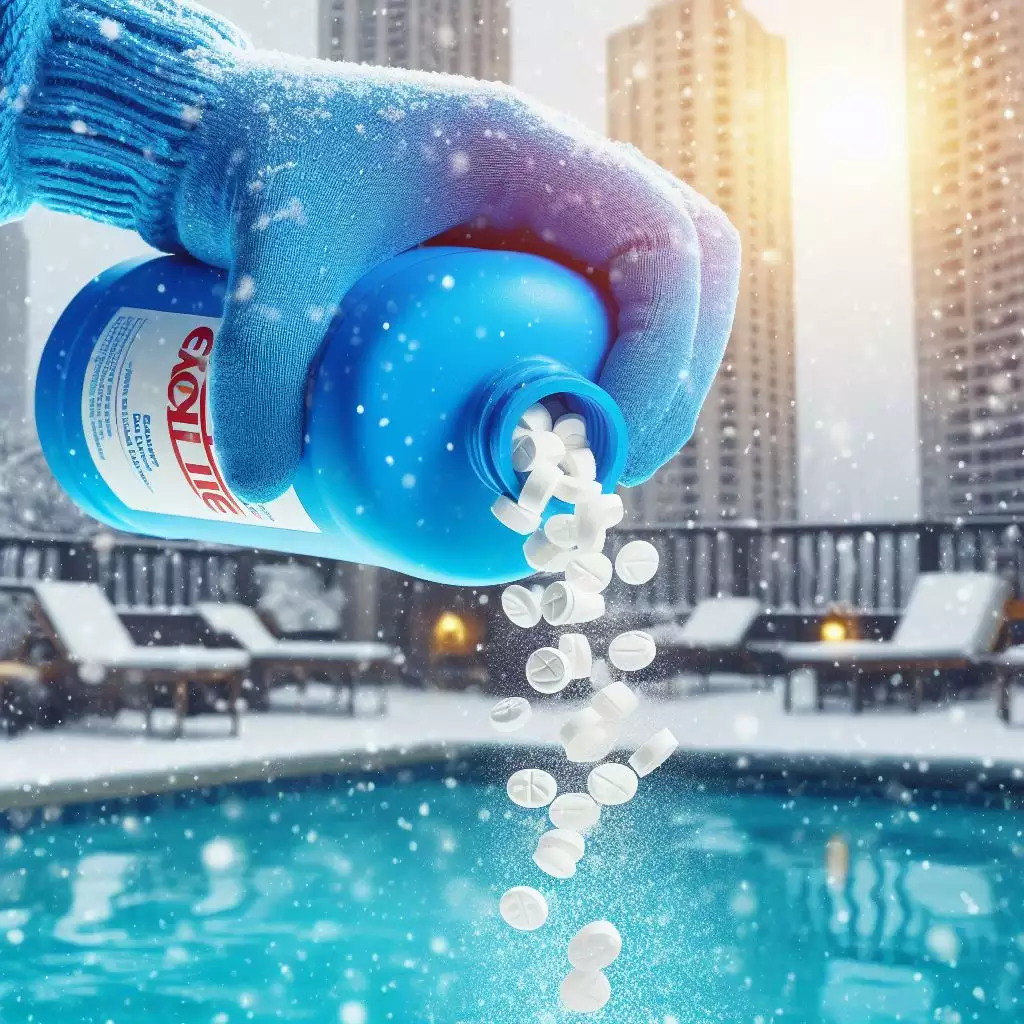Maintaining crystal-clear and hygienic swimming pool water is paramount for ensuring a safe and enjoyable experience for swimmers. Chlorine tablets play a vital role in this process, providing a continuous source of sanitization against harmful bacteria and algae. However, achieving the perfect balance of chlorine levels requires careful attention to water quality. In this comprehensive guide, we’ll discuss how to adjust the dosage of chlorine tablets according to various water parameters, ensuring your pool is always in top condition.

I. Understanding the Basics of Chlorine Chemistry
Before diving into adjustments, let’s first establish a foundation in chlorine chemistry. Chlorine works by breaking down organic matter and neutralizing harmful microorganisms. There are two primary forms of chlorine in pools: free available chlorine (FAC) and combined chlorine (CC). FAC is the active form that sanitizes the water, while CC is less effective and can contribute to unpleasant odors and eye irritation. Ideally, you want a high FAC level and low CC level.
II. Assessing Water Quality Factors
Adjusting chlorine tablet dosage starts with assessing your pool’s current water quality. Key factors to consider include:
1. pH Level:
The pH of your pool water should ideally be between 7.2 and 7.8. Acidic water (low pH) can increase chlorine demand, requiring more tablets. Alkaline water (high pH) reduces chlorine’s effectiveness. Adjust pH first before altering chlorine levels.
2. Temperature:
Warmer water increases chlorine demand as it speeds up chemical reactions. For every 10°F increase in temperature, you may need to increase your chlorine dosage by 30-50%.
3. Bather Load:
Heavy use of the pool, especially during peak hours, introduces more contaminants, necessitating more frequent or higher doses of chlorine.
4. Rainfall & Contaminants:
Rainwater can dilute chlorine levels and introduce debris, while wind can blow in dirt and pollen. Monitor and adjust accordingly.
5. Water Circulation:
Poor circulation can lead to chlorine dead zones, where bacteria can thrive. Ensure proper filtration and circulation before adjusting chlorine.
III. Monitoring Chlorine Levels
Regularly testing your pool water is crucial for precise chlorine dosage adjustments. Use a reliable test kit to measure both FAC and CC levels.
1. Ideal FAC Range:
Aim for a FAC level of 1-3 ppm (parts per million) for most residential pools. Higher levels may be necessary for heavily used commercial pools.
2. CC Level Check:
Keep CC levels as low as possible, ideally below 0.5 ppm. High CC indicates the need for additional shock treatment and improved filtration.
IV. Adjusting Chlorine Tablet Dosage
Based on your water quality assessment and test results, adjust the dosage of chlorine tablets as follows:
1. Low FAC:
If FAC levels are too low, increase the number of tablets or their frequency of placement in the chlorinator or skimmer.
2. High CC:
Address high CC levels by first shocking the pool with a high-strength chlorine product, then adjust regular chlorine tablet dosage to maintain balance.
3. Seasonal Adjustments:
During peak swimming season, consider using more tablets or more frequently to keep up with increased demand. In off-seasons, reduce dosage to avoid unnecessary waste.
4. Fine-Tuning:
Once you’ve made initial adjustments, continue to monitor levels daily for a few days until you find the optimal dosage that maintains balanced chlorine levels.

V. Considerations for Special Circumstances
1. Automated Systems:
If your pool has an automated chlorinator, program it based on your water testing results and the manufacturer’s instructions. Many modern systems allow for remote monitoring and adjustments.
2. Spa & Hot Tubs:
Chlorine demands in spas and hot tubs are often higher due to their smaller volume and higher temperatures. Follow specific guidelines for these types of water features.
3. Weather & Seasonal Changes:
Prepare for seasonal changes by adjusting chlorine dosage proactively. Heavy rainfall and springtime blooms can suddenly increase contamination levels.
VI. Emphasizing Regular Maintenance
Proper chlorine dosage is just one aspect of comprehensive pool maintenance. Regularly vacuuming, brushing, and backwashing your filter will remove debris and improve chlorine’s effectiveness. Don’t forget to inspect and clean your chlorinator or dispenser regularly to ensure smooth operation.
Conclusion
Achieving the perfect balance of chlorine levels in your pool requires a proactive approach and a keen eye for water quality changes. By understanding the basics of chlorine chemistry, monitoring water parameters, and adjusting your chlorine tablet dosage accordingly, you can maintain a safe, clean, and inviting swimming environment for all. Remember, the key to success lies in consistent testing, careful adjustments, and regular maintenance. With these tips in hand, you’re well on your way to enjoying worry-free pool time.

 Instant
Quote
Instant
Quote Email
Us
Email
Us